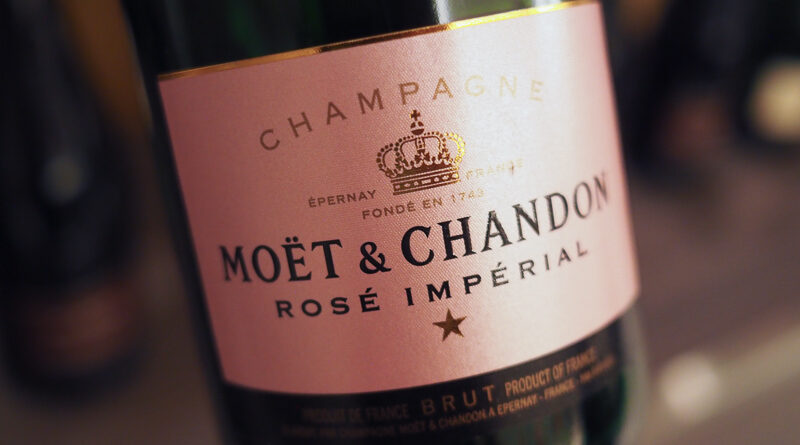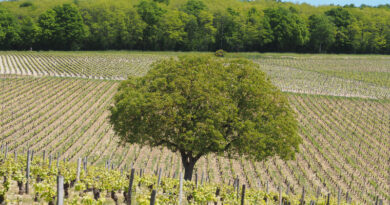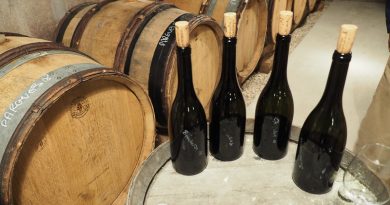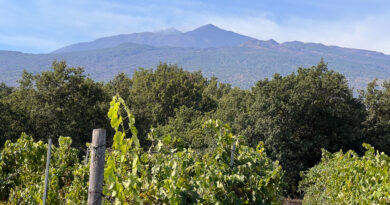Moët et Chandon: the science behind the success of rosé Champagne
The vast majority of rosé Champagne made by blending still red wines with white wines to make a pink base wine, which then undergoes a second fermentation in bottle. And the quality challenge is making good red wines, given the cold climate of the Champagne region. Here, Moët et Chandon’s Benoît Gouez shared the secrets of their success in producing the region’s most popular pink wine.
Pink Champagne is a rapidly growing category, and Moët et Chandon are leading the way with this popular style. Moët et Chandon chef de cave Benoît Gouez came to London to present a unique tasting, looking at the techniues and issues surrounding its production. ‘Welcome to a world premier,’ says Gouez. ‘In the past we’ve done base wine tastings, but this is the very first time we’ve organized a tasting of every style of red wine we produce nowadays.’
‘We have made rosé Champagne for ever,’ he says. The oldest proof of rosé in their books is an order was 1801, when Napoleon ordered 100 bottles for him, and another 100 for his mother. The wines were from 1796, and back then rosé then was spelled with a ‘z’.
But historically, rosé Champagne was very small, running at around 2% for a long time. The growth in the category has been over the last 10 years. ‘When I started with the company back in 1998 the classic production was 2-3% per year globally for Champagne,’ says Gouez.
And rosé was only made in vintage years, because the biggest challenge in Champagne is to make decent red wines. ‘I don’t even say “good”, just decent,’ says Gouez. ‘We don’t have the right climate to produce Pinot Noir with good levels of maturity, so historically it was only in the best vintages that red wines were made in order to produce rosés with the blending method.’
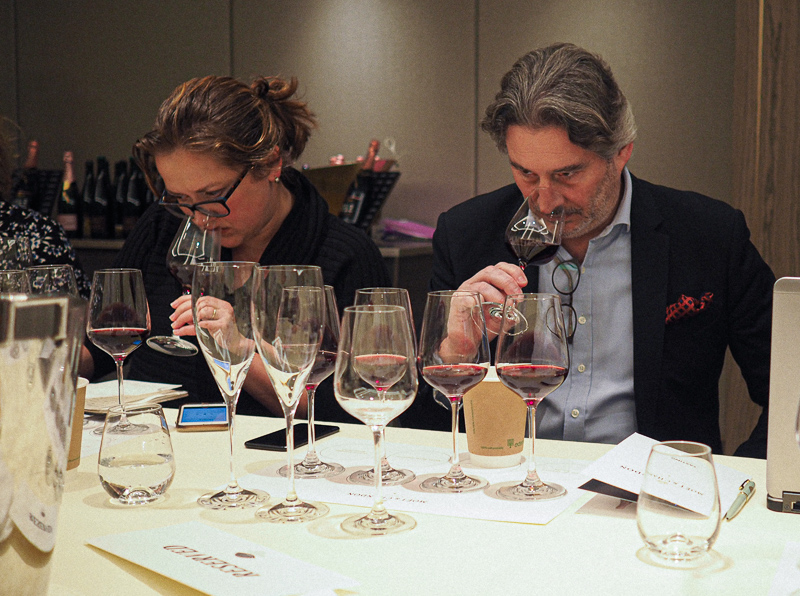
Historically it was only in the best vintages that red wines were made to produce rosé Champagne with the blending method, and this is the only region in France allowed to make pink wine by mixing red and white. ‘At Moët all our rosés are blended rosés,’ says Gouez. ‘It is the best way to adjust the components and get the harmony that we are looking for.’
Moët introduced Imperial Rosé for the first time in 1996. They now have four rosés in the range, and these represent 20% of their production. ‘In 20 years we have gone from 2% to 20%,’ says Gouez, ‘whereas in the region as a whole it has gone from 2-10%.’
To make this change they have had to begin making a lot of red wine, and they have invested in two red wineries, one in Epernay for making Pinot Meunier from the Marne, and the other in Val du Clos in the Aube to make Pinot Noir.
We tasted five red wines. Gouez says that he is looking for two different styles of red wine. The first is a fruity, supple style. The second is one with more concentration to be kept in reserve for the future. He says that the red reserves are even more important than the white ones. ‘We know that we are going to produce white wines every year,’ he says, ‘but we are not sure we are going to make reds every year.’ So his plan is to have one-and-a-half years of red reserves in case they don’t make a red wine in a particular year. 2017, for example, was a disaster for reds. ‘Almost no red wine made in 2017,’ says Gouez. They tried making some and they stopped after two days. ‘A few days before the harvest they were confident. It is when we started to harvest, we realized that the botrytis was much more advanced than what we’d seen before.’ Fortunately, this was followed by 2018, which was a big success and allowed them to get rid of wines that they didn’t really want from 2017.
The first two wines we tasted are made using thermovinification, a technology that was introduced at Moët back in the 1970s, imported from the south of France. The purpose was to have a way of making red wines even in bad years. The principle behind thermovinification is to heat the grapes. They are destemmed, and heated to 70 C. This degrades the proteins, especially the enzymes from botrytis. These include laccase, a polyphenol oxidase that oxidises juice components very quickly. ‘This was the idea in the 1970s, making red wines from grapes not perfectly clean,’ explains Gouez. Now though, the grapes are in much better condition, so there’s a second reason they have brought thermovinification back. This is because it also explodes the cells of the skins, which releases anthocyanins and aromatic precursors, so they only extract for 2 hours with agitation and then press. Then they settle and ferment in the liquid phase at 18 C like a white, rather than fermentations on skins which are usually at 28-30 C. The reason for this is to have very little tannic extraction, with no seed tannins at all. They have also discovered that they can extract and then reveal a lot of thiol precursors. ‘These are mostly known in Sauvignon Blanc, but we have realised that in Champagne, in Pinot Noir, Pinot Meunier and Chardonnay, that we have the thiol precursors,’ says Gouez. ‘That character of rhubabrb is an expression of 3MH and 3MHA.’ These polyfunctional thiols add aromatic interest, but are relatively short-lived in wine.
Thermovinification has become a signature of their non-vintage rosé. ‘We are basically the only ones who use this technology in Champagne. It is what we are looking for: we want to keep Rosé imperial light and easy to drink without much structure. We keep the tannins and the structure for the vintage.’
Quite a bit of red wine is added to rosé. For vintage it is 9% and for non-vintage 13%. But 10 years ago, when the red wines were paler, they added 25%.
To make the maceration reds, they use Burgundian techniques of punching down two or three times a day early on, and then see how things are going. Macerations are quite short, of 7-8 days. All the grapes are destemmed. ‘I’ve never seen ripe stems in Champagne,’ says Gouez. ‘The idea is to take what comes easily.’
Moët have their own selected yeast strains, taken from natural fermentations. The whites are all co-inoculated for malolactic. ‘We add yeast first and once it has started we add the bacteria,’ says Gouez. For the reds, inoculation is sequential. They do the first fermentation and then rack and centrifuge before inoculating for malolactic. ‘We found that malolactic fermentation on clean wines preserves purity compared with doing it on full lees,’ says Gouez.
Pinot Meunier 2019 (thermovinification)
Marne Valley. Bright, juicy and very fruity with a simple, pleasant berry fruits character, backed by a firm acid backbone. Has a hint of bubblegum. The structure comes mostly fruit the acidity. There’s a bit of crunch on the finish.
Pinot Noir Aube 2019 (thermovinification)
Nice bright cherry and raspberry fruit. Very fruity and open with nice sweetness. Again, really exuberant fruit and nice acidity, with low tannin – just a little crunch on the finish. Fairly simple: all about the fruit.
Pinot Noir Aubé (maceration)
Bright and vivid with nice focused red berry and cherry fruits with some keen acidity and a bit of grippy structure. It’s primary and structured, but also fresh and quite elegant. Very pretty. This is made to be kept in reserve.
Pinot Noir Marne (maceration)
Real elegance here: lovely freshness with a spicy edge and good structure. Vivid and fresh with good acidity and a juicy raspberry character. This has nice precision with good acidity and a red cherry brightness. Lovely. [This is the only one of the four to be used in the vintage rosé.]
Vin de Reserve Rouge 2018
Pretty and floral with nice precision and a juicy cherry and plum character. Good acidity. Has some nice texture here with lovely focus. Has a little development and a spicy finish. This is the same as the third glass but with an extra year.
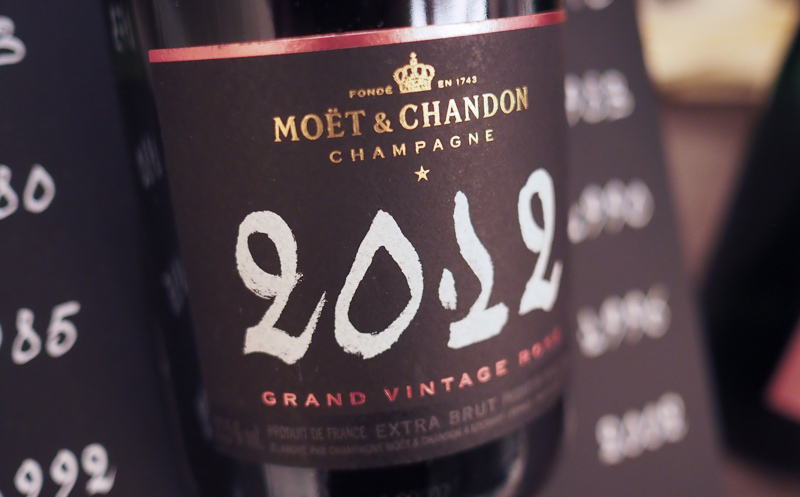
Champagne Moët et Chandon Rosé Impérial NV France
12% alcohol. 40-50% Pinot Noir (of which 10% is red wine); 30-40% Pinot Meunier (of which 10% is red wine); 10-20% Chardonnay. 21 months on lees, dosage 7-9 g/litre. This is a full pink colour with some hints of orange. It’s fresh and exuberantly fruity with vivid cherries, wild strawberry and nice bright lemony acidity. Juicy and vivid with lovely intensity, finishing quite zesty. This is very pretty, but there’s a bit more here than just pretty fruit. 90/100
Champagne Moët et Chandon Grand Vintage Rosé 2012 France
12.5% alcohol. 42% Pinot Noir of which 13% is red wine, 35% Chardonnay, 23% Pinot Meunier. Minimum of five years on lees, 5 g/l dosage. Aromatic with a rose hip syrup and wild strawberry edge to the nose. Focused on the palate with some toasty hints, some redcurrant, a twist of damson and nice mandarin detail. This is quite serious and grown up with lovely structure and good acidity. 93/100

